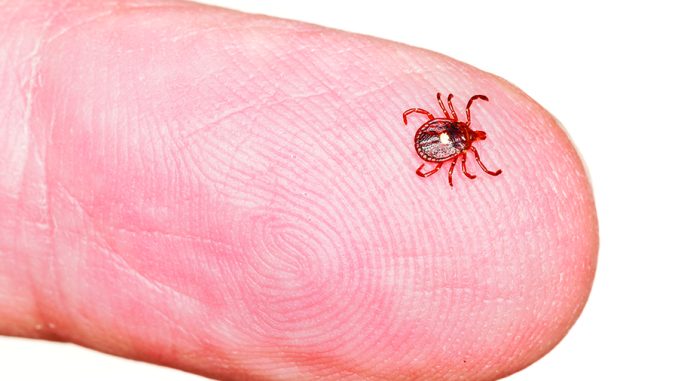
A recent study from the University of Michigan using nanoparticle technology showed promise to blunt the effects of Alpha-gal syndrome, also known as red meat allergy. However, this treatment is far from ready for primetime, needing to pass through multiple stages of approval before it will be ready for mass distribution.
“There’s a lot of steps between showing that something might be effective in a mouse model in a lab, versus ‘Is it safe and effective and useful in humans?’ But having said that, it’s super exciting too. This whole idea of nanoparticle technology in treating food allergies in general is exciting, because we don’t have a lot to offer people in terms of preventing the development of food allergies, especially Alpha-gal at this point,” said Dr. Erin McGintee, allergist and immunologist with ENT and Allergy Associates in Southampton and a medical advisor for the Stony Brook Southampton Tickborne Disease Resource Center.
Alpha-gal syndrome is caused by the saliva of the lone star tick. When the tick bites, it injects a sugar molecule called alpha-galactose, or alpha-gal, into the body. In some people, this triggers a reaction from the immune system. It causes mild to severe allergic reactions to red meat because these foods contain alpha-gal as well. As with other allergic reactions, the body thinks this sugar is harmful and mounts a response.
According to Dr. McGintee, studies suggest that somewhere between 10 and 30% of people living in an area endemic for lone star ticks will have an alpha-gal antibody response after a lone star tick bite. Not all of those people actually have allergic reactions. She said the number’s probably much lower than that, somewhere between 1 and 9% will have allergic reactions to meat.
Currently there are no treatments for alpha-gal syndrome other than Benadryl, or in extreme cases, an EpiPen. A case series published on the National Library of Medicine website stated that auricular acupuncture was shown to be effective over the course of several months, but Dr. McGintee pointed out that this is the normal course of this condition. “Let’s say you had a positive alpha-gal test when I measured you today, and between now and when I test you again in six months you didn’t get any additional lone star tick bites. I can tell you with 100% certainty that when I redo your test in six months, it’s going to be much lower, because that’s what happens with alpha-gal allergy. The longer you go without getting lone star tick bites, the lower your alpha-gal numbers go down.”
The beginning of fall is prime season for lone star tick nymphs, which are often confused with chiggers. These juvenile ticks are so small you can barely see them, but their bite actually causes a stronger immune response than the adults.
To prevent tick bites and avoid alpha-gal and other tick borne diseases, Dr. McGintee recommends avoiding the areas where they are found, using bug spray, and other common-sense tick precautions. “So if you want to keep eating burgers, you really have to know when ticks are active and take a lot of precautions to try and avoid bites. It’s very hard to avoid bites out here. So even when you’re very careful, you can get bites. But knowing that the adult and nymph ticks are very active in like late May, early June, is the peak where the nymphs and the adults are active, and August and September are when you’re very likely to encounter the larva. You have to be careful walking in anywhere where deer and small rodents spend time.”

